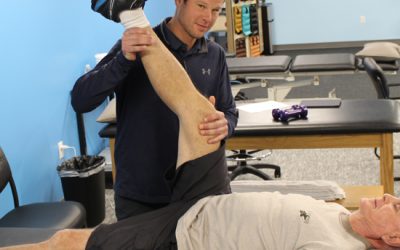 BY NICOLE CARVILLE, DPT
BY NICOLE CARVILLE, DPT
When I meet a new patient as a Physical Therapist, I sit down, start their evaluation by asking about their current condition. Then I review their medical history and medications before we get started. It is important to me to get a solid picture of who they are and what preexisting conditions they have before I get their heart rate up and start exercising. During this process, I often see “Osteoporosis” on the list of preexisting conditions. Most of the time I ask, “When were you diagnosed with osteoporosis? Are you on any medication for bone density? Have you ever received PT for this condition?” More often than not, the answers are, “I’m not sure. Maybe at one point in time. No, definitely not”. I often end the conversation there as the patient sitting in front of me is likely there for a different reason, but at some point during a treatment session, I will ask if they have any interest in preventing future osteoporotic fractures and building their bone density. The answer is usually, “I didn’t know you could do anything other than take medication”.
So, what is osteoporosis?
“Osteoporosis [is] defined as a skeletal disorder characterized by decreased bone strength and increased susceptibility of fractures”.

Changes in bone density and bone structure
These changes occur for a handful of reasons including, but not limited to gender, early menopause, medication use, increased caffeine consumption and smoking history. The literature shows that there are 54 million Americans diagnosed with osteoporosis (2006). Why do we care about this? One in two women and up to one in four men over the age of 50 WILL break a bone due to osteoporosis. The most common fractures associated with osteoporosis include hip, wrist and vertebral compression fractures. Statistics show that 90% of hip fractures occur due to osteoporosis and fracturing your hip is associated with a 50% increased risk of mortality during the year following fracture! Moreover, wrist fractures due to osteoporosis are just as common as hip fractures and vertebral compression fractures are twice as common as hip fractures. All of these fractures can lead to chronic pain, decreased quality of life and decreased mobility.
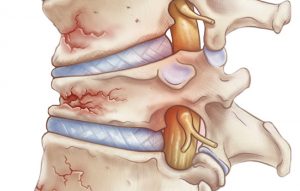 Vertebral compression fracture
Vertebral compression fracture
Most of these fractures occur from simple movements that we do in our day-to-day life and fracture risk can be decreased just by changing our habits. The vertebral compression fracture pictured above is most at risk with the movement pictured below where you round the spine forward and reach to pick up something.
The right and wrong way to pick something up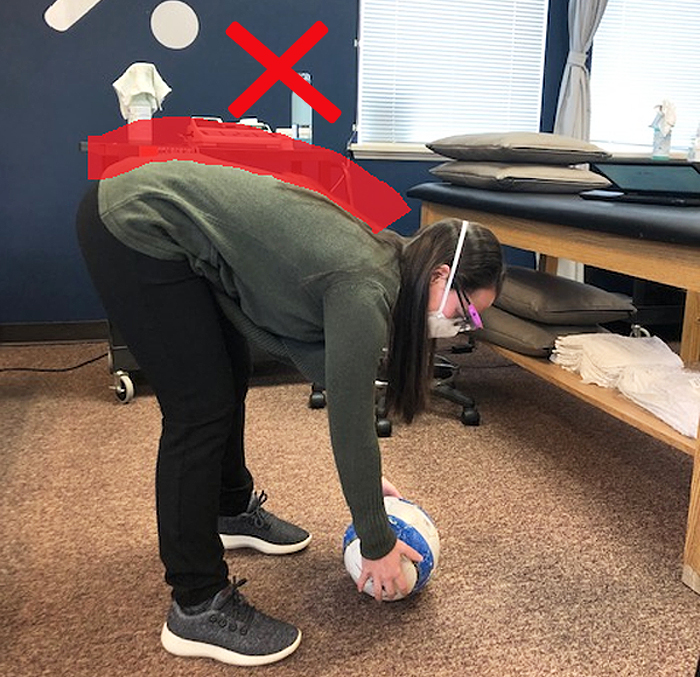
Wrong!
Below are two better options for picking up an object off the ground. The first image utilizes a squat to get down to the ground where the spine is straighter. This is a strategy we will work on and build the strength to be able to get down to pick up the object on the ground. The second image is the Golfers reach where you pivot on one leg and have hand held support on a sturdy object nearby. This is a helpful strategy to pick up a purse off the ground or to pick up a piece of clothing off the floor. In this picture, I have my hand on the black table to steady myself. However, balance is important for this strategy and is another skill we will work on in the clinic.
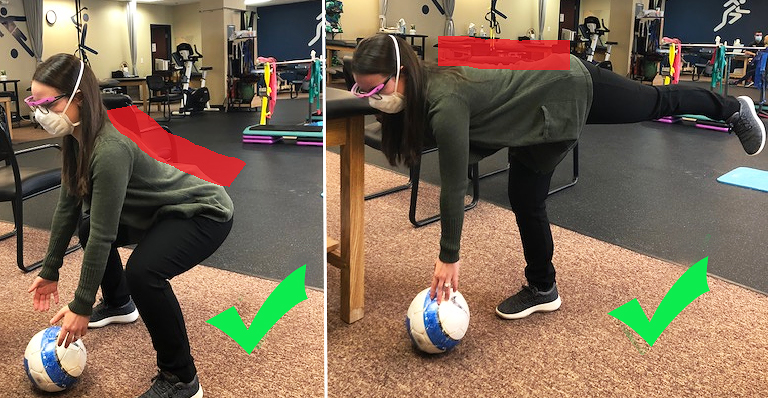
The literature clearly states the seriousness of an osteoporosis diagnosis and the importance of taking action to both decrease your future fracture risk and build your bone density. Patient’s cannot always feel the changes in their bones or detect increased fracture risk until it is too late. However, the good news is that Physical Therapy can help! There are three pillars of treatment for osteoporosis:
- Exercise (PT!)
- Diet
- Medication
When you decide you are ready to start, we will go over all three pillars and refer you to additional health care providers based on your needs – such as a Nutritionist to discuss diet changes or an Endocrinologist/Rheumatologist to discuss medications if you are interested. We will discuss modifiable risk factors and safe body mechanics like those pictured above for all of your activities around the house.
The physical therapy pillar of osteoporosis treatment will include postural training, walking drills, balance training, site specific strengthening for the back, hips and spine, core strengthening and resistance training – all designed based on your prior level of exercise, activity and goals. The sooner you get started, the safer your spine, hips and wrists will be from a life changing fracture. At Rye Physical Therapy, we are prepared to walk you through this education and create a bone building exercise program that is tailored to your specific needs.
